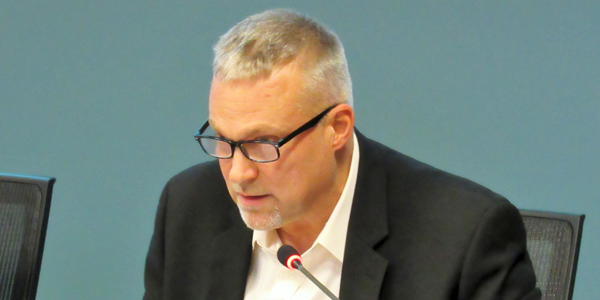MISO issued two maximum generation alerts and conservative operations declarations because of severe weather in June and a heatwave in July.
Both months were hotter than normal, and MISO recommended suspending transmission and generation maintenance in the North and Central portions of its Midwest region on July 5, when temperatures and loads were both above forecasts. The RTO said its system was stable throughout the event.
MISO spokesperson Mark Brown said staff coordinated closely with members and neighboring system operators during the event to manage generation and transmission resources. “MISO and our members train regularly and intensively to manage the power system in all types of conditions,” Brown told RTO Insider, adding that the alerts are meant to provide “situational awareness” to members.
The RTO also declared a hot weather alert for MISO South July 20-23 when the average temperature was 99 degrees Fahrenheit.
MISO Senior Director of Systemwide Operations Rob Benbow also said the system performed well during June despite above-normal temperatures and severe weather in the South region.
“We did see some hot weather alerts in the Central and North regions … at the middle to the end of the month, and we also experienced a transmission system emergency due to a forced outage in the South region in the early part of June, and that was followed by conservative ops and a max gen alert on the following day until that facility was returned to service,” Benbow said during a July 24 Informational Forum.
The day after severe weather on June 3, MISO declared a transmission system emergency in South with a maximum generation alert and conservative operations instructions. Benbow said the event caused real-time price spikes.
MISO’s June load peaked at 121 GW on June 29, up about 10 GW from last June’s peak. Average load was just under 77 GW, up 7 GW from a year earlier. Average real-time energy prices were $31.74/MWh, up 13%, which MISO attributed to localized congestion and higher demand.
MISO Reviewing Hartburg-Sabine Proposals
MISO has received multiple proposals for its second competitively bid transmission project, but it will not reveal the number of companies behind the proposals for at least another month — if at all.
The second request for proposals for the Hartburg-Sabine 500-kV junction project closed July 20, part of MISO’s 2017 Transmission Expansion Plan. The project will be in service by 2023 and is meant to alleviate system congestion in eastern Texas. The RTO opened the submittal window in early February.
However, MISO only identifies the number of proposals and their submitters once they’ve been judged and accepted as complete during an initial review expected to wrap up in early September, CEO John Bear said. The RTO will then post a list of finalists advancing to the evaluation process. Incomplete proposals are not revealed.
“MISO is pleased with the robust number of responses to the request for proposals,” Aubrey Johnson, executive director of competitive transmission, said in a statement. “This shows broad interest from qualified transmission developers and underscores the confidence in our competitive selection process. We look forward to moving to the next phase of the selection process to identify the best proposal for this important project.”
MISO plans to announce its selected developer for the project by Dec. 31. Bear said the project is expected to cost $129 million and have a benefit-to-cost ratio of 1.35:1. He added that it is the RTO’s first competitive project to include a substation.
— Amanda Durish Cook




